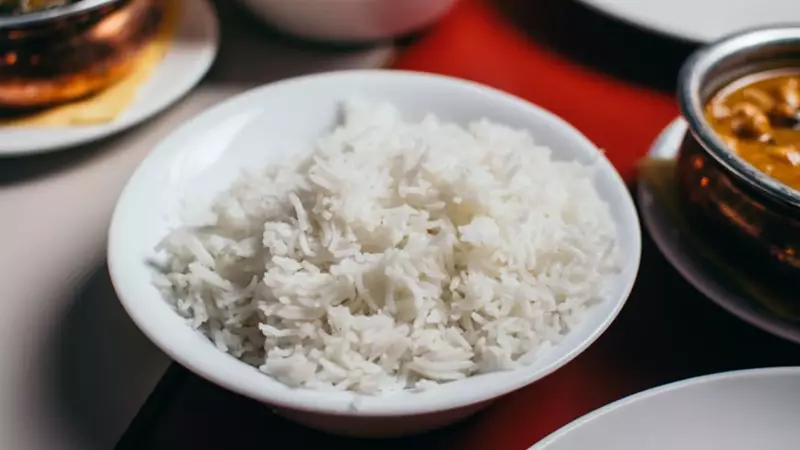
When most people think of Indian rice, their minds immediately go to basmati or perhaps brown rice. However, India's diverse agricultural landscape boasts numerous rice varieties that remain largely unknown to the average consumer. These traditional grains not only offer unique flavors and textures but also come packed with nutritional benefits that mainstream rice types often lack.
Beyond Basmati: India's Hidden Rice Treasures
India grows over 6,000 different varieties of rice, though only a handful make it to urban supermarkets. The country's rich soil and varied climate conditions create the perfect environment for cultivating diverse rice strains, each with its own distinct characteristics and culinary applications. Many of these lesser-known varieties have been cultivated for centuries in specific regions, passed down through generations of farmers who understood their unique properties.
Rediscovering these traditional rice types represents more than just culinary exploration - it's about preserving agricultural biodiversity and supporting sustainable farming practices. As consumers become more health-conscious and adventurous in their food choices, these hidden rice gems are gradually gaining recognition beyond their native regions.
Six Remarkable Rice Varieties You Probably Haven't Tried
Let's explore six extraordinary rice varieties that deserve a place in your kitchen. Each brings something special to the table, from exceptional nutritional profiles to unique cooking properties that can transform ordinary meals into extraordinary culinary experiences.
Red Rice, known for its striking crimson hue and nutty flavor, grows predominantly in the Southern states of India. What makes this rice particularly noteworthy is its high antioxidant content, specifically anthocyanins - the same compounds found in blueberries and red cabbage. These antioxidants help combat oxidative stress in the body, potentially reducing inflammation and supporting heart health. The rice retains its bran layer during processing, which gives it its characteristic color and ensures that valuable nutrients aren't lost.
Black Rice, often called 'forbidden rice' in historical contexts, boasts an impressive nutritional profile that includes high levels of anthocyanins, iron, and vitamin E. When cooked, it develops a deep purple color and a slightly sweet, nutty flavor that works wonderfully in both savory and dessert preparations. This rice variety was historically reserved for royalty in ancient China, but today it's becoming increasingly accessible to health-conscious consumers in India.
Joha Rice from Assam represents the Northeastern region's rice cultivation heritage. This aromatic short-grain rice has a delicate flavor profile that complements traditional Assamese dishes perfectly. Beyond its culinary appeal, Joha rice contains essential oils that not only contribute to its fragrance but may also offer additional health benefits. The rice plays a significant role in Assam's cultural and culinary identity, featuring prominently in festivals and special occasions.
Kalanamak Rice, with its distinctive black husk and compelling aroma, hails from Uttar Pradesh. This rice variety has even received Geographical Indication (GI) status, recognizing its unique connection to its region of origin. The grain's name translates to 'black and salty,' though the rice itself isn't actually salty - the name refers to its appearance. When cooked, it delivers a flavor experience that many describe as complex and unforgettable.
Ambemohar Rice from Maharashtra gets its name from its unique mango blossom aroma. This fragrant rice has been part of Maharashtrian cuisine for generations, particularly valued for making light, fluffy rice that pairs beautifully with regional dishes. The grain's subtle fragrance enhances meals without overwhelming other flavors, making it a versatile choice for various culinary applications.
Pusa Basmati 1121, while technically a basmati variety, deserves mention for its extraordinary grain length. Developed through agricultural research, this rice expands significantly when cooked, resulting in grains that can reach remarkable lengths while remaining separate and non-sticky. Its delicate flavor and texture have made it popular both within India and in international markets.
Why Explore Beyond Mainstream Rice Varieties?
Venturing beyond the usual rice options offers multiple benefits that extend from personal health to environmental sustainability. Each of these traditional varieties brings something unique to your diet while supporting agricultural diversity and preserving culinary heritage.
From a health perspective, many traditional rice varieties offer superior nutritional value compared to heavily processed white rice. The pigmented varieties like red and black rice contain higher levels of antioxidants, while others may offer better fiber content or unique micronutrient profiles. Incorporating different types of rice into your diet can contribute to a more diverse nutrient intake.
Environmentally, seeking out these lesser-known varieties supports agricultural biodiversity. When farmers grow multiple crop varieties rather than focusing exclusively on high-yield commercial types, it helps maintain healthier ecosystems and more resilient food systems. This diversity becomes particularly important in the face of climate change, as different varieties may demonstrate varying levels of resistance to changing growing conditions.
Culturally, exploring regional rice varieties connects us with India's rich agricultural heritage. Each grain tells a story of the land it comes from and the people who have cultivated it for generations. By incorporating these traditional foods into modern diets, we help ensure that this knowledge and these crop varieties continue to thrive rather than disappearing in favor of more commercial options.
As consumer interest in these traditional rice varieties grows, they're becoming increasingly available through specialty stores, farmers' markets, and online platforms. When purchasing, look for reputable sources that provide information about the rice's origin and cultivation methods. Proper storage in airtight containers away from light and moisture will help maintain their quality and extend their shelf life.





